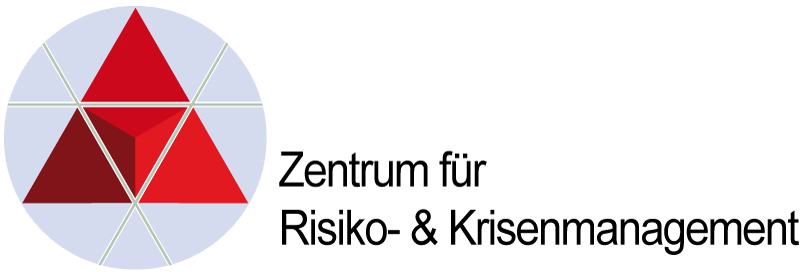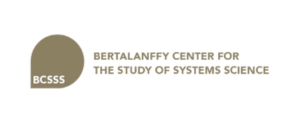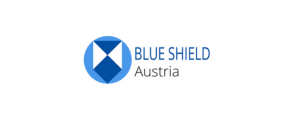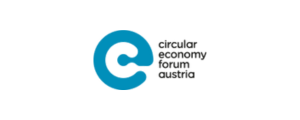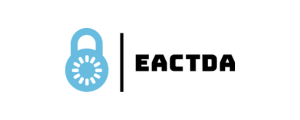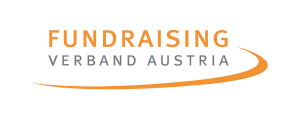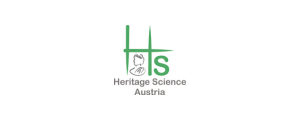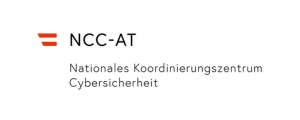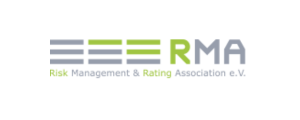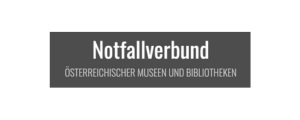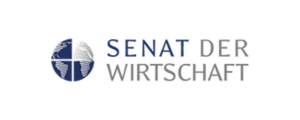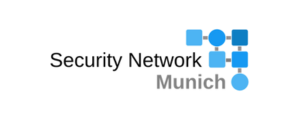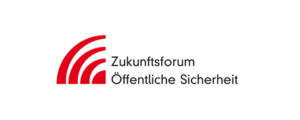RESEARCH & DEVELOPMENT
Innovation at the top
The Center for Risk and Crisis Management (CRC) is at the forefront when it comes to innovative solutions for the complex challenges of tomorrow. Our focus is on the development of advanced technologies and methods that revolutionize the field of risk and crisis management. By working closely with leading scientists and practitioners from various disciplines, we create synergies that enable us to realize groundbreaking research projects.
From theory to practice
Our approach is not only to generate research results, but also to realize them in practical solutions. We attach great importance to ensuring that our developments not only exist on paper, but also bring real benefits to society. This includes testing our innovations in real-life scenarios to ensure their effectiveness and applicability. Working with organizations and companies enables us to implement our solutions directly where they will have the greatest impact.
An open dialog for the future
The CRC sees itself not only as a research institution, but also as a platform for exchange and dialog on the latest trends and developments in the field of risk and crisis management. We actively promote the transfer of knowledge between science, business and the public sector in order to be jointly prepared for future challenges. Our aim is to create a community in which ideas are freely shared and solutions for tomorrow are worked on together.
Research projects
National research projects
SRA-Strategic Situation Center for Resource Analysis
Synopsis:
- The supply of raw materials to manufacturing companies in the energy and communications technology sector is a vulnerable system. The sensitivity of Austrian high-tech industries is particularly high where there is no possibility of substituting scarce and expensive raw materials. The aim of the “situation center” to be developed is to establish an indicator-based early warning system for critical strategic raw materials. To this end, the structures, procedures, legal framework and information and communication technology requirements of the situation center are defined in a specification sheet and the concept is evaluated using a use case as an example.
Detailed brief description:
- Funding program: National Security Research Program KIRAS
- Project type: R&D service
- Project costs: Total costs: EUR 102,807.00
- Projektkosten: Gesamtkosten: 102.807,00 EUR
- Project idea: (09/2013)
- On the initiative of the Board of the Center for Risk and Crisis Management, a consortium was formed in September 2013 to develop the KIRAS project in question. The project was approved for implementation by the FFG in 2014 and is funded by the KIRAS national security research program (www.kiras.at).
- Further information by CLICKING ON THIS LINK.
International research projects
International research project ASGARD
ASGARD
ANALYSIS SYSTEM FOR COLLECTED RAW DATA
Target:
- ASGARD has a single goal: to contribute to the technological autonomy of law enforcement agencies and the effective use of technology. The technologies will be disseminated to end users through an open source program, with a focus on forensics, intelligence and foresight (intelligence-led prevention and anticipation). ASGARD will drive advances in the processing of seized data, the availability of vast amounts of data and big data solutions in an increasingly connected world. New areas of research will also be addressed. The consortium consists of LEA end users and practitioners who will “pull” from the research and development community and “drive” knowledge transfer and innovation. A community of LEA users is the endpoint of ASGARD with the technology as the focal point for collaboration (a restricted open source community). In addition to traditional use cases and testing, ASGARD will use hackathons to demonstrate its results, in line with open source concepts and continuous integration approaches. Lock-in to a specific vendor will be addressed, also taking into account its role and the investments already made by LEAs. The project will take a cyclical approach to achieve initial results. Data set, data analysis (multimodal/multimedia), data mining and visual analytics are included in the work plan. The technologies are developed according to the motto “It works” and not “It’s the best”. Strategies for rapid introduction/flexible use are planned.
- The project includes a licensing and IPR approach that is consistent with the realities of LEA and ethical requirements. ASGARD incorporates a comprehensive approach to data protection, ethics and societal impact, taking into account fundamental rights. ASGARD leverages the existing relationship of trust between LEAs and the research and development industry, as well as experiential knowledge in FCT research. ASGARD will enable its user community to take advantage of agile methodologies, technology trends and open source approaches currently used by the general ICT industry as well as organized crime organizations and terrorists.
Support program | Dimensioning:
- EU Horizon 2020, project type: RIA – Research and Innovation Action
- Total project costs: EUR 11,992,556.25
- Project period: 09/2016 – 02/2020
- Call for proposals for the 2015 CORDIS program: CLICK HERE
- Link to European Commission-Community Research and Development Information Service: CLICK HERE
- Link to ASGARD project homepage: CLICK HERE
International research project SHELTER
SHELTER
Sustainable Historic Environments hoListic reconstruction through Technological Enhancement and community based Resilience
Target:
- In recent decades, cultural heritage has been affected by an increasing number of climate-related threats due to the impacts of climate change, posing new challenges for conservators and heritage managers.
- SHELTER aims to develop a data-driven and community-based knowledge framework that brings together leaders from the scientific and heritage communities to increase resilience, reduce vulnerability, and promote better and safer reconstruction in historic areas. The first step in improving resilience is linked to improving the understanding of the direct and indirect impacts of climate and environmental change and natural hazards on historic sites and buildings by linking concepts used in disaster risk management and climate change adaptation with cultural heritage management to make inclusive and informed decisions.
- Comprehensive disaster risk management plans need to be prepared based on the specific characteristics of cultural heritage and the nature of hazards in a regional context, taking into account the different types of cultural heritage as well as the specific socio-economic conditions, as these have a direct impact on the environment and vulnerability of such systems. A deep understanding of the hazards, threats and vulnerability of the historic area, local dynamics and the provision of innovative governance and community-based models can provide useful methods, tools and strategies to improve resilience and ensure sustainable reconstruction.
- Due to the information complexity and the different data sources, the SHELTER framework will be implemented in a data-driven multi-scale and multi-source platform able to provide the necessary information for planning and adaptive governance. All developments of the project will be validated in 5 open labs representative of the main climate and environmental challenges in Europe and of the different typologies of cultural heritage. (Original text)
Keywords:
- Historic preservation, Climatology and climate change, S5 – Emergency response (Copernicus service), Geoinformation and geodata analysis, Sustainable innovation, Resilience, Sustainable reconstruction, Historic areas, Natural hazards (Original text)
Support program | Dimensioning
- EU Horizon 2020, project type: RIA – Research and Innovation Action
- Total project costs: EUR 5,999,448.75
- Project period: 06/2019 – 05/2023
- H2020-Call: H2020-LC-CLA-2018-2 (Building a low-carbon, climate resilient future: climate action in support of the Paris Agreement)
Further information
- Link to European Commission-Community Research and Development Information Service: Call for tenders: CLICK HERE
- Link to the SHELTER project homepage: CLICK HERE
International research project NUTRIsafe
NUTRISAFE
Securing food production and logistics with distributed ledger technology
Target:
- Blockchain, or rather distributed ledger technology (DLT), is currently an omnipresent topic. More and more implementations and promising applications can be found in the FinTech (financial technology) and InsureTech (insurance technology) sectors in particular. However, this technology is not limited to the financial or insurance industry, but can be used in many other applications. One of these areas is the food industry.
- The entire agricultural value chain has been continuously optimized through digitalization and the use of efficient processes. The aim of the bilateral “NutriSafe” project is to research the potential, risks and impact of DLT technology on the resilience of value chains in the food industry and on security of supply. Increasingly frequent natural disasters, technical accidents, crime and terrorism as well as security gaps in information and communication technologies are jeopardizing the functionality of critical infrastructures and thus the supply of food to the population.
- Due to the great importance of the food sector, a comprehensive consideration of the impact of new technologies in this area is of particular importance. One aspect of this is the traceability of goods flows in a complex supply chain network, which has already been successfully tested in pilot projects by companies such as Walmart and Maersk.
- The origin of end products can be quickly determined with the help of DLT. This speed is particularly important in crisis situations. In addition, this technology can help to secure a supply chain if information security in production facilities or operational information systems such as ERP systems is not guaranteed.
- For this purpose, the development of a procedure for the evaluation of DLT in the food industry, especially for crisis situations, is indispensable. In the course of the project, several use cases on the use of DLT in the food industry will be investigated (e.g: IT attack on milking robots, impairment of products, transportation disruptions), which have a direct impact on food supply security in Austria. Developed procedures are tested, evaluated and prepared for training measures as part of a serious game in cooperation with practice partners and consumers. This results in innovative methods and models to improve food safety and secure supplies in an emergency.
Support program | Dimensioning
- AT: KIRAS support program: www.kiras.at
- DE: Security research program: www.sifo.de
- Project type: Bilateral research project Germany/Austria
- Total project costs AT: EUR 862,659.00
- Project period: 02/2019 – 01/2021 (24 months)
Further information
- KIRAS-Platform: CLICK HERE
- NUTRISAFE Homepage: Austria: www.nutrisafe.at
- NUTRISAFE Homepage: Germany: www.nutrisafe.de
- NUTRISAFE presentation at the IKT2019: CLICK HERE
